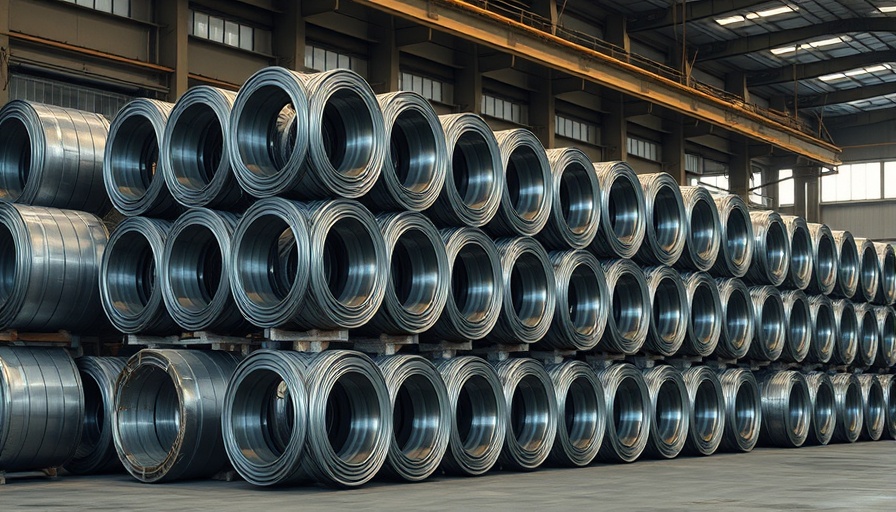
Canada's Bold Response to U.S. Tariffs: An Economic Overview
In a decisive move against American tariffs, Canada is set to impose a staggering C$29.8 billion in retaliatory tariffs on U.S. imports. Effective from 12:01 a.m. (0401 GMT) on Thursday, this action responds to U.S. President Donald Trump's recent steel and aluminum tariffs, as Canada aims to protect its vital steel and aluminum industries. Finance Minister Dominic LeBlanc emphasized, “We will not stand idly by while our iconic steel and aluminum industries are being unfairly targeted,” highlighting Canada’s commitment to retaliatory measures that impact both national interests and international trade relations.
Understanding the Tariff Breakdown
The tariffs primarily target steel products worth C$12.6 billion, along with aluminum valued at C$3 billion. Additionally, an array of goods including computers, sports equipment, and cast iron products will incur tariffs totaling C$14.2 billion. This financial strategy underscores Canada's intent to mirror U.S. trade actions dollar-for-dollar, escalating tensions in an increasingly convoluted trade war.
Historical Context: Why Do Tariffs Matter Now?
Trade conflicts between the U.S. and Canada date back decades, rooted in the significant interdependence of both economies. Canada's position as the largest foreign supplier of steel and aluminum to the U.S. complicates matters further. The imposition of tariffs often shifts market dynamics, leading to inflated prices on consumer goods—a challenge for both countries that can ignite public discontent. Moreover, the backdrop of Trump's administration's aggressive trade policy has invited allies to reconsider their trade relations, often resulting in retaliatory tariffs that escalate quickly.
Global Economic Impact: A Broader Lens
The potential ripple effects of these tariffs extend beyond U.S.-Canada relations. Analysts suggest that this trade war could unsettle global markets, affecting not only the involved nations but also their trading partners worldwide. The European Union, for instance, has already threatened to implement its tariffs in response to U.S. actions, indicating that this battle could very well encompass a broader spectrum of international trade issues.
Diverse Perspectives: Weighing the Pros and Cons
While Canadian officials have framed these tariffs as necessary for economic protection, some industry experts warn of the potential backlash. The escalating tariffs could lead to increased prices for consumers, reduced access to goods, and strained relations between trade partners. Conversely, proponents argue that the tariffs are vital for preserving domestic industries against perceived aggressive U.S. trade policies, thereby ensuring the long-term sustainability of Canada's steel and aluminum sectors.
Future Implications: What Lies Ahead?
As global markets respond to increases in protectionist policies, economists predict that continued trade tensions could lead to a downturn in investor confidence. A recent poll indicated that a substantial number of Americans perceive Trump’s tariffs as erratic, raising fears of a recession due to potential price hikes on consumer goods. Moving forward, the interactions between U.S. Secretary of State Marco Rubio and Canadian Foreign Minister Melanie Joly during their meeting at the G7 foreign minister's conference may prove pivotal in determining the trajectory of Canada-U.S. trade relations.
Conclusion: The Urgency for Strategic Cooperation
In light of the escalating U.S.-Canada trade war, it is increasingly critical for both nations to seek common ground through constructive dialogue and trade negotiations. As the economic landscape shifts, stakeholders on both sides must advocate for approaches that prioritize collaboration over confrontation.
 Add Row
Add Row  Add
Add 



Write A Comment